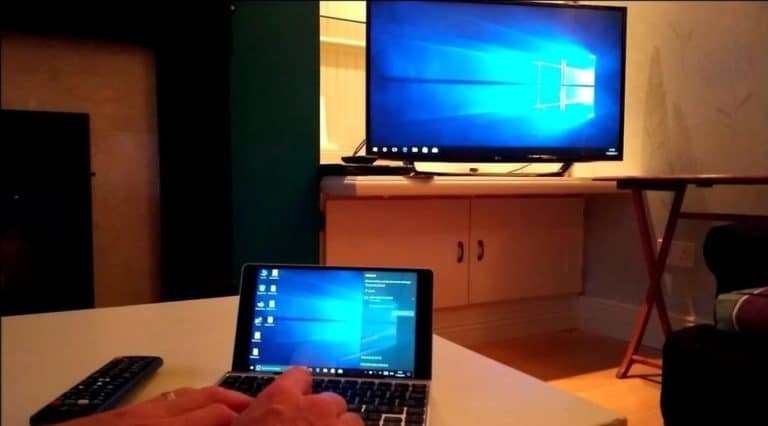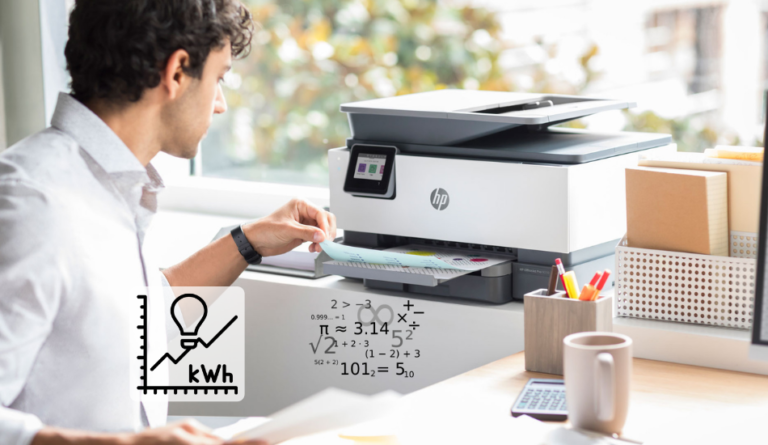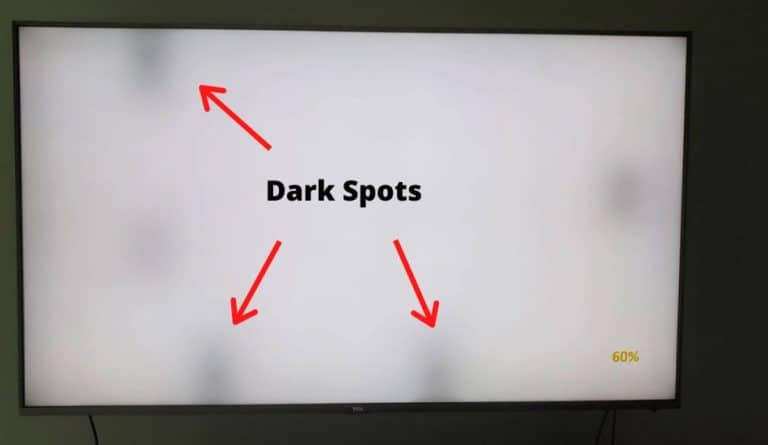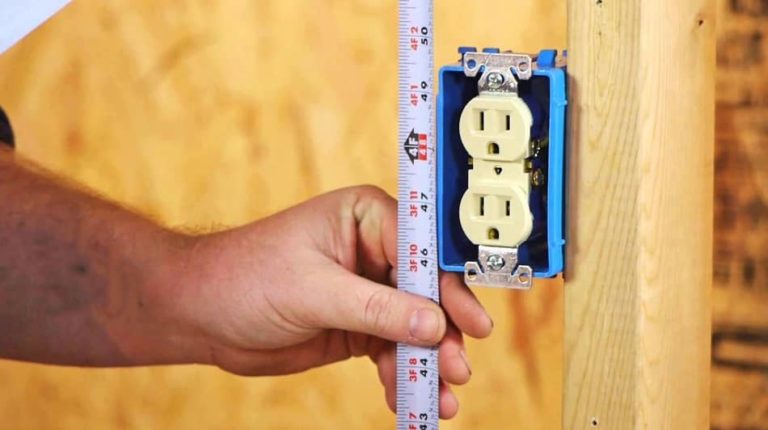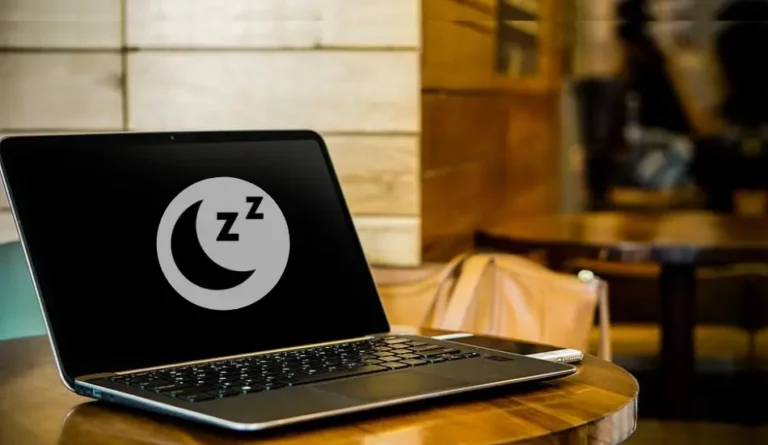How Much Power (Watts) Does An Electric Oven Use?
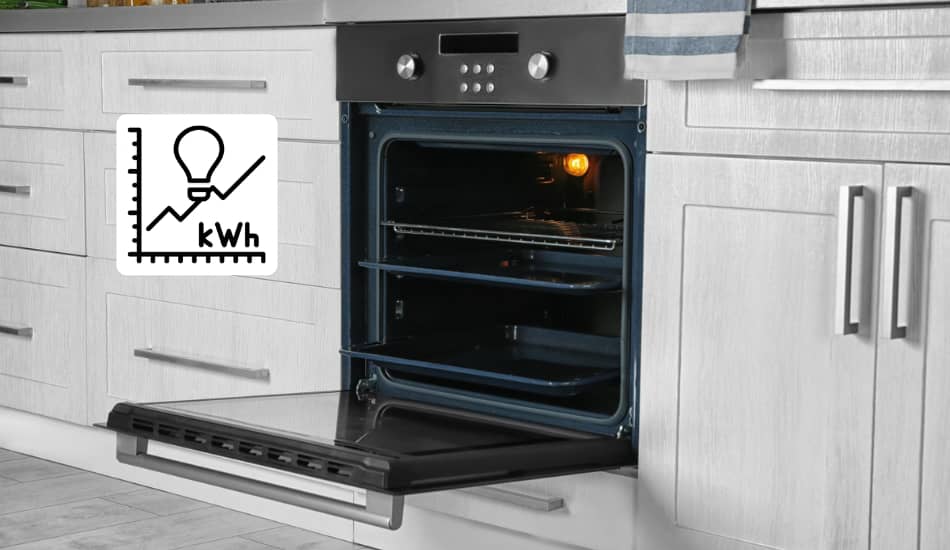
Electric ovens, among other electrical appliances such as fridges and dishwashers, are often referred to as ‘heavy draw’ appliances. This statement is obvious in the fact that electric ovens are also called “heavy-draw appliances”. The size of the oven is a crucial factor for power usage estimation. The bigger the size, the bigger the space that must heat up is, which results in larger amounts of power drawn. In this article, we’ll talk about how much electricity an electric oven use. Let’s start.
Table of Contents
How Much Power (Watts) Does An Electric Oven Use?
So How Much Power (Watts) Does An Electric Oven Use? A typical electric oven consumes between 2 kW to 5 kW of energy per hour. For the 2h of cooking time with the average electric oven that runs at around 3 kW, you will use 6 kWh, which will cost you 78 cents per use (13 cents is the average price per kWh in the United States).
The power consumption of a conventional electric oven ranges from 2000 W to 5000 W which is a total of around 410 kWh per year. With an average use of 3 hours per week, an electric oven will cost you more or less $60 per year on your energy bill. As for the gas oven, the gas bill will be slightly lower, since this fuel costs less than electricity. In the table below we can see how much cost to run an electric oven for different models:
| Electric Oven Power | Electricity Price | Cost Per Use | Cost Per Month |
|---|---|---|---|
| 1500 Watts (1.5 kW) | 0.13 cents/kWh | $0.19 | $5.7 |
| 2000 Watts (2 kW) | 0.13 cents/kWh | $0.26 | $7.8 |
| 2500 Watts (2 kW) | 0.13 cents/kWh | $0.32 | $9.6 |
| 3500 Watts (3.5 kW) | 0.13 cents/kWh | $0.45 | $13.5 |
| 5000 Watts (5 kW) | 0.13 cents/kWh | $0.65 | $19.5 |
Electric ovens are becoming more popular today, and you can find many different models in stores and online shops like Amazon. If you are interested in how to calculate the power consumption of your electric oven and other related things to this topic, keep reading this article.
If you want to know How Much Power (Watts) Does a Rice Cooker Use, read this article.
How Much Electricity Does An Electric Oven Use Per Month?
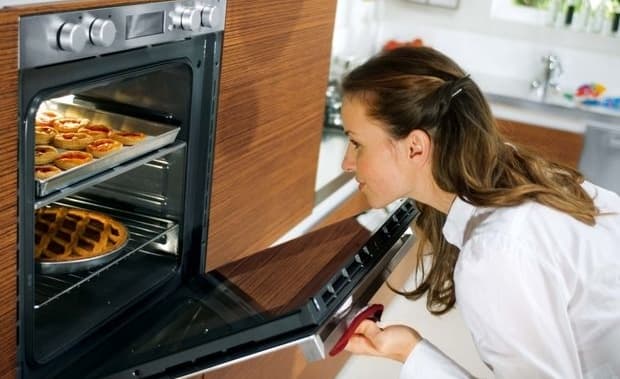
Electrical ovens are usually 600mm built-in ovens and their power range is between 2kW to 5kW. Even though the electric oven power is something people do not pay attention to, it is something that can most certainly affect your energy bill. Based on the average electricity price rate of 13 cents per kWh (for the U.S.), 60 minutes of active cooking can cost around $0.39 or $11.7 per month.
There are different factors that influence power (electricity) usage. Some are the efficiency of the oven model, how much heat they need, what settings you use, and of course, the frequency and longevity of cooking.
An example of an often-used electrical oven is the Empava 24 WOB14 model. It is 600 mm wide, its capacity is around 2.3 Cubic Feet (65 liters), and it has a 2.8 kW wattage output. With these specifications, the expected amount you will have to pay to run an electric oven is 36 cents per hour. If you use your oven 5 days a week, it will cost you $7.2 per month.
To put things in perspective, a lot of people do not use the oven this often for this long, but some people do, and this could be a good orientational number to roughly calculate your own expenses.
Important! To connect an electric oven, you need a wire, an outlet, and a circuit breaker, designed for a current of 30-40% more than the actual one.
Related Article: PS5 Electricity Cost (5 Tips To Save Money)
Calculating The Energy Consumption Of Electric Ovens
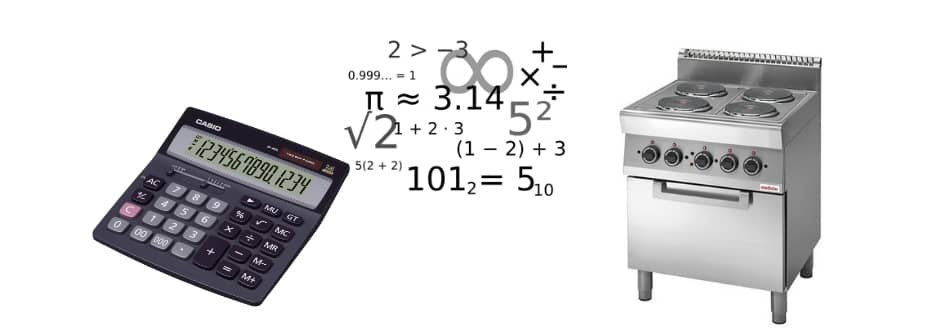
In order to calculate how much an electric oven consumes electricity, you need to know its power (wattage). Other parameters that also need to be taken into account are how often it is used and in what modes. Keep in mind that it is much easier to calculate the electricity consumption for 1 hour of operation.
For a class A +, the energy consumption during operation in maximum mode is from 1.5 kW to 2.5 kW per hour, depending on the power. Typically, the cooking temperature for most ovens is 120-180 °C (248 to 356 °F), and the temperature range of various modes is from 30 to 300 °C (80 to 572 °F).
The volume of the oven also varies and is usually chosen on the basis of the number of people in the family. Based on the fact that the best-selling ovens are medium-volume ovens, and they are operated in modes at 60% of the maximum, you can take an average energy consumption of 800 to 900 watts per hour. We’ll use the 800 W power for a 1.5-hour period.
The formula is as follows:
Total = P (Watts) x T (h)
Total = 800 W x 1.5 (h) = 1200W = 1.2 kW
Electricity price = 1.2 kW x 0.13 = $0.15 per usage
You can also use this Electric Oven Calculator to get faster results. Just input the data and you will get the total power consumption of your electric oven in days, months, and years.
Now, to determine how much the oven consumes per month, multiply the energy consumption by the number of hours in 30 days. For example, if you use an electric oven every other day for 1.5 hours, then in a month the oven is operated for 15 (days) x 1.5 = 22.5 hours. This means that in a month, it will consume 22.5 x 0.8 kW = 18 kW of energy, which will cost you $2.34.
Another great way you can get more accurate power consumption of your electric oven is to use the measuring device Kill A Watt Meter. This device will measure all the electricity that goes through the outlet. You can find very affordable models here on Amazon.
Related Article: How Much Electricity (Power) Does A Hot Tube Use?
Electric Oven Volume Affects The Cost Per Use
The level of energy consumption depends on the internal volume of the oven. To find out how much electricity an electric oven consumes, you also need to know its volume. There are 3 categories into which ovens are divided according to the interior space:
- Large volume – more than 65 liters (17.1 gallons)
- Medium – starting from 35 liters (9.24 gallons)
- Small volume – 12-35 liters (3.17 to 9.24 gallons)
If we take class A for comparison and compare these 3 categories, we get that an oven with an internal volume of more than 65 liters (17.1 gallons) consumes more than 1 kilowatt per hour, the average volume is around 0.8, and for a small volume is around 0.6 kWh.
Should I Buy A Gas Or Electric Oven?
To simplify, the gas oven purchasing price is higher than it is for the electrical oven, but over time gas ovens spend less than the electrical ovens. Gas ovens cost around 27 cents per hour to run, while the electric oven costs 36 cents per hour. The higher initial price of gas ovens might never even be compensated with cheaper gas rates. It all depends on how often do you use them and therefore it’s really just a matter of personal choice and preference.
Electric Ovens Vs Gas Ovens: What’s Better?

As previously mentioned, the electric oven draws around 36 cents of electricity per hour, whereas a gas oven draws 27 cents. If you cook frequently, around five days a week, the saved amount is 45 cents a week, which is 28.60 US dollars a year. With this information, you can make an educated decision if this price difference is large enough for you to purchase a gas oven.
Just to point out, you must be aware that these calculations are estimated. The reason for this is multiple factors that influence electricity usage. By answering the following questions you may have a better idea:
- How often do I use the oven?
- What is my current price for gas and what is the price for electricity?
- Do I even have the possibility to install a gas oven in my house?
- What is the replacement cost of an electric oven for a gas oven?
How Much It Will Cost Me To Run Electric Oven?
The most recent modern electric oven models are made to be more energy efficient than the ones produced in the past. Bigger ovens or ovens that are switched on frequently (at high temperatures), still use a lot of energy.
Electric ovens consume between 2 and 5 kWh per hour. This corresponds to the energy consumption is used for one hour. The average price of electricity per 1 kWh is 13 cents in the US. If we take the case of consumption of 1kwh and you use your oven for 3 hours per week, this amounts to:
- $0.97/week
- $3.92/month
- $46.8/year
Tip To Save Energy on Your Electric Oven
There are some energy-saving tips that do not require making any changes in the actual oven set-up or purchasing a new oven. They are:
- Cook bigger amounts of food at once. Cooking bigger amounts of food at once cuts back on the number of times you use the oven.
- Keep the oven door closed as much as you can. Instead of opening the oven every time you want to check on the food, look at the food through the glass. It is because every time the oven door is opened, heat is unnecessarily being spread into the kitchen.
- Clean your oven and range frequently. Baked-on food and leftover burnt pieces act like insulation for the heating parts of the oven, lowering the performance of the oven and lifting the electricity price.
- Use glass and ceramic instead of metal bakeware. Glass and ceramic transfer heat more efficiently than metal does.
- Get a head start on self-cleaning. Press the self-cleaning button right after you finish cooking to save some preheating time.
Save Electricity When Choosing An Electric Oven
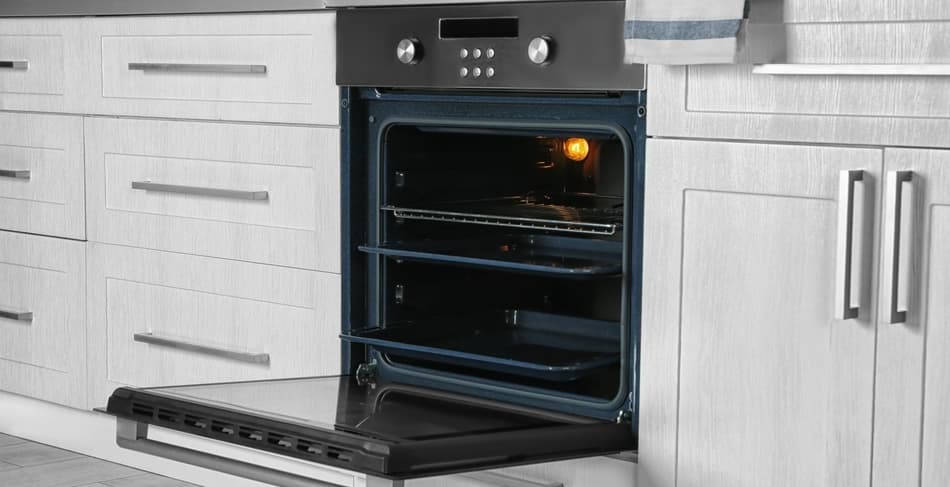
Buying the first available model without studying the type of installation, class of energy consumption, and dimensions will not be successful. Before buying a specific model of an electric oven, you should study all the positive and negative aspects of the device.
1. Look For Energy Consumption Label
When going into a store or browsing the online catalog, it is smart to look at the energy consumption ratings. Look for an Energy Star Label. Purchasing an oven that has an A+ energy rating or higher is a simple way of saving money. These A+ and over ovens need less energy to reach certain heat settings and they keep more heat inside while cooking.
Knowing that a higher energy rating does not always mean less energy spent is important. Size comes into consideration as well, so even highly energy-efficient ovens, if large, will spend more energy than smaller non-energy-efficient ovens.
2. Check The Wattage
Always be sure to check the wattage of the actual oven and each individual stovetop burner. Lower power consumption is indicated by lower wattage use. You should be informed though, that by purchasing a lower wattage use oven you are giving up some heating power.
3. Use Cookware That Heats Up Quick And Retains Heat
Lowering electricity bills on containers for holding food is tricky. On the one hand, metal cookware holds heat very well but takes a long time to heat up (longer time heating means bigger power usage). On the other hand, thinner ceramic cookware will heat up faster but also lose heat faster. So, when it comes to cookware options, it is best to find the ones you like the best because saving on this aspect of cooking is difficult.
How Much Energy Does A Gas Oven Use?
Factors such as the supplier’s price of gas, power of the oven, and frequency of usage greatly influence the end sum of money spent to run the gas oven. An average gas oven uses about 12 MJ (megajoules) of gas an hour which costs around 27 cents.
Figuring out the exact price you pay monthly can be problematic, because of the different supplier prices, but one thing is for sure, the cost of running a gas oven is smaller than an electrical oven. Just like electrical ovens run on electricity, gas ovens run on gas. They both use similar amounts of electricity and gas to run but the price rate of gas is in most cases smaller and that is why having a gas oven is lower costing.
If you want to know How Much Power (Watts) Does A Range (Kitchen) Hood Use, feel free to read this article.
Final Thoughts
Modern electric ovens are increasingly replacing traditional gas ovens. This is primarily due to the quality of baking, simplicity, and safety of operation. So, an average electric oven that uses 3000 watts, usually costs the owner around 36 cents per hour at a high heat setting. We hope this article has helped you and cleared up any possible confusion about the electricity that ovens use.


